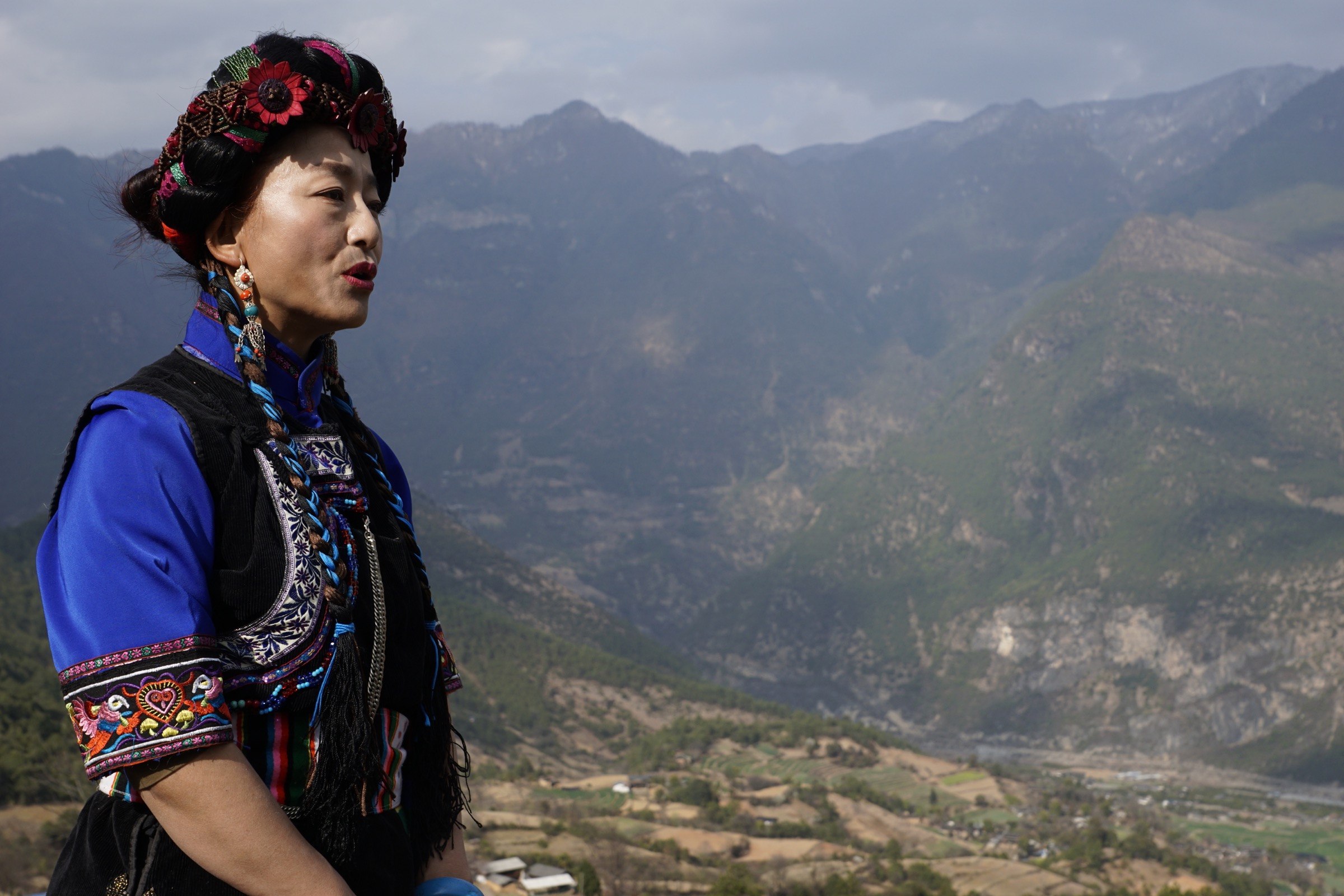Album ‘Songs of the Naxi’ celebrates China’s southwestern folk music
The Naxi, one of China’s 55 ethnic minorities, has long been popular with international anthropologists. But its folk music is routinely overlooked. A new album hopes to change that.

A new album, Songs of the Naxi of Southwest China, is bringing a collection of traditional folk songs from one of China’s smaller ethnic groups to a global audience for the first time.
Performed by acclaimed artist Hé Jīnhuā 和金花, who belongs to the Naxi, one of China’s 55 officially recognized ethnic minorities, the 20-track record provides not only a compelling listening experience but a rich glimpse into the daily life of this small yet diverse minority group.
UCLA professor of ethnomusicology Helen Rees, who played a key role in the project, says that while the Naxi, who number around 325,000 and live mostly in the southwest province of Yunnan, have garnered high levels of international interest relative to their small size, their folk songs have yet to receive the same attention as other aspects of their culture.
“The Naxi are quite unusual because they do have very substantial name recognition outside of the country,” Rees said, explaining that this is largely due to the famous writing system used by Naxi indigenous priests known as the Dōngbā 东巴. “They have this remarkable pictographic writing system which attracted tremendous attention within China and the West right back at the beginning of the 20th century. The result of that is that many Naxi pictographic scriptures are in Western museums, collected by people like Joseph Rock, who was a very famous National Geographic Explorer and Dōngbā expert of the mid-20th century.”
The Naxi, among other ethnic groups, is also known for the dòngjīng 洞经, a more Sinicized form of instrumental ensemble music that became popular among foreign backpackers in the 1990s, Rees said. But the group’s folk songs have yet to receive global recognition. Hopefully this will change, Rees said. Accompanying the music in Songs of the Naxi of Southwest China are translations and photos.
“Bringing the folk song CD out in a format with the lyrics in three different languages — Naxi, Chinese, and English — is helping bring Naxi folk songs into the international limelight that already exists for other aspects of Naxi culture,” Rees said.
The Naxi is culturally diverse and influenced by the region’s mountainous geography and close proximity to Tibetans, Han Chinese, and other groups like the Bai and Lisu. This diversity is reflected in the album, which features songs in the Naxi language and a local Tibetan dialect. The ease with which He Jinhua can sing in both and master different styles is likely to surprise international listeners, Rees said. But what Western listeners are likely to find most striking is the “tremendous range and expressive power of a single female voice.”
In fact, the first 14 tracks feature He unaccompanied by instruments. In some songs, her voice is layered over itself to give the impression of multiple women singing together.
He, who was raised by farming parents in Yunnan’s Yulong County, has now toured extensively throughout the world and is considered a National First Grade Artist, China’s highest distinction for professional artists.
Rees said that the project was He’s idea, motivated by a desire to preserve traditional Naxi music. “Jinhua was very keen to learn as much as she could from people all around the Naxi homeland of the songs from the different regions to perform them, and then to disseminate them and encourage other people to learn them. So this project, in part, is one way to document her life’s work.”
With titles such as “Wedding Song,” “Ploughing Song,” and “Drinking Song,” the music offers valuable insight into Naxi traditional rituals. He learned many of the songs as a young child, just from people around her.
One song in particular holds special importance to the artist. When He was in Los Angeles recording the album, she was unsure whether to record a track called “Dawn Lament,” which is usually sung in front of the coffin at a funeral.
While He eventually recorded the track, she also decided that it would not appear on the CD. “She decided she did want to document it, but we agreed it was not going to go on the CD because her much-loved parents were still alive, and it would be inauspicious to put it on the CD in that context,” Rees said.
Sadly, He’s parents both passed away before the album was released. But their passing also meant that He no longer felt uncomfortable excluding “Dawn Lament” from the album.
Fortunately, the photography for the project was done before He’s parents passed away. “Photographs in some ways memorialize that wonderful family when they were all still together,” Rees said.
He intended the album to preserve Naxi folk songs, but perhaps it also serves as a tribute to her family and the community who raised her.
Songs of the Naxi of Southwest China is available through Smithsonian Folkways.





